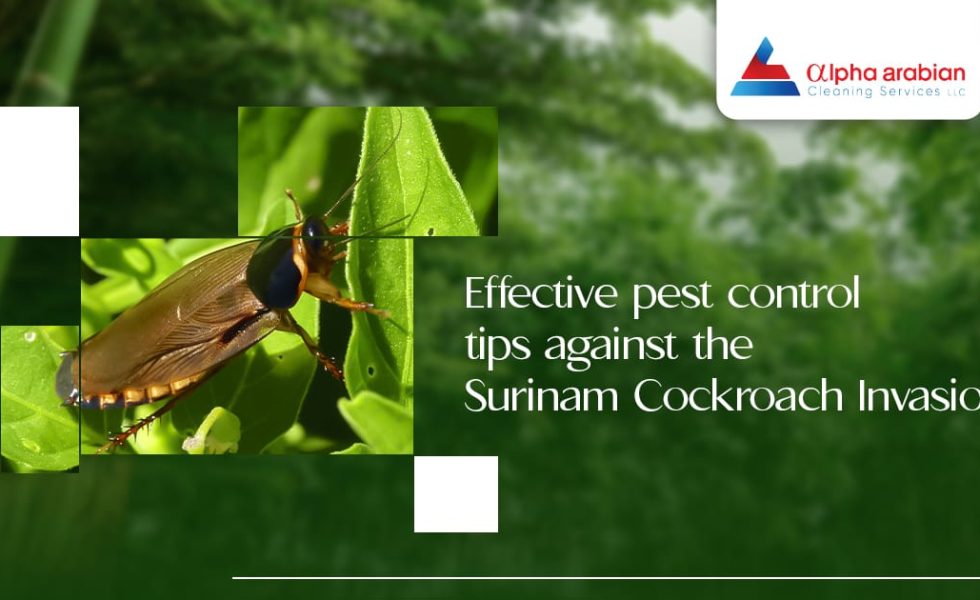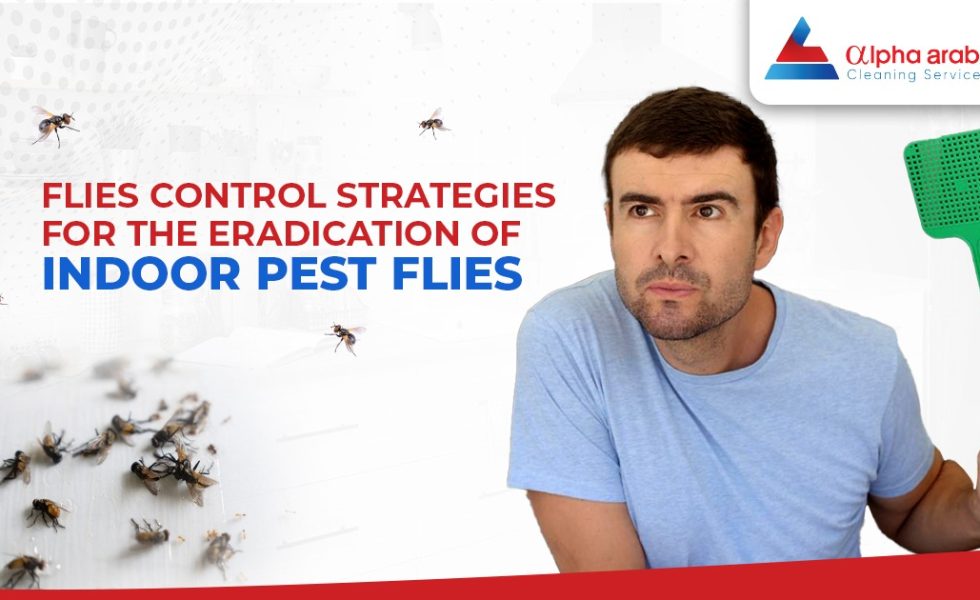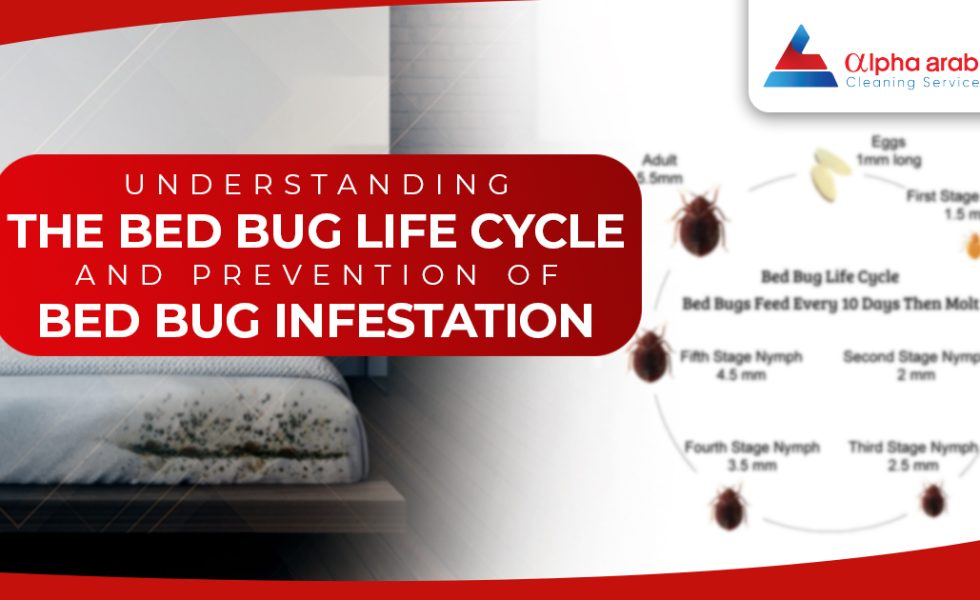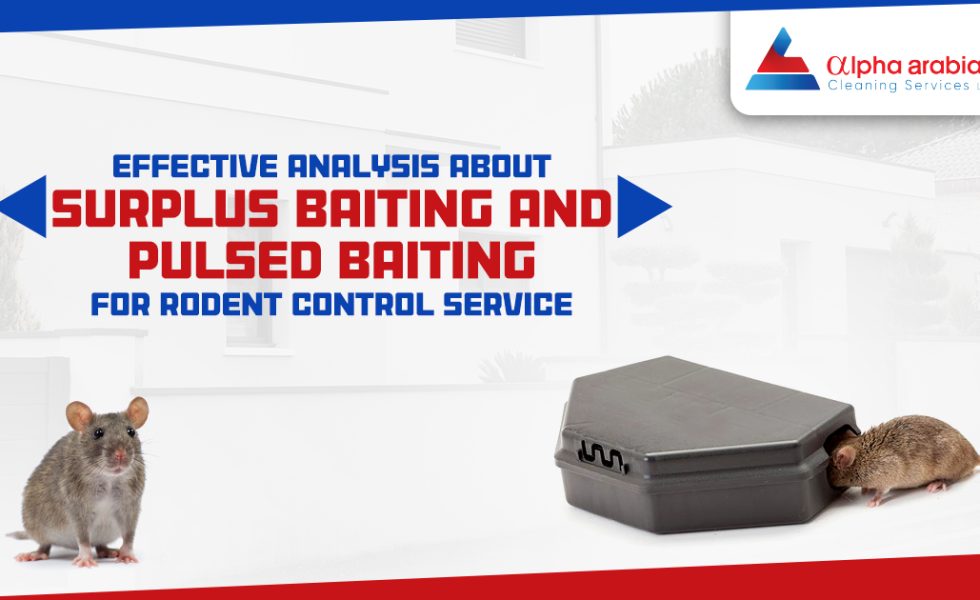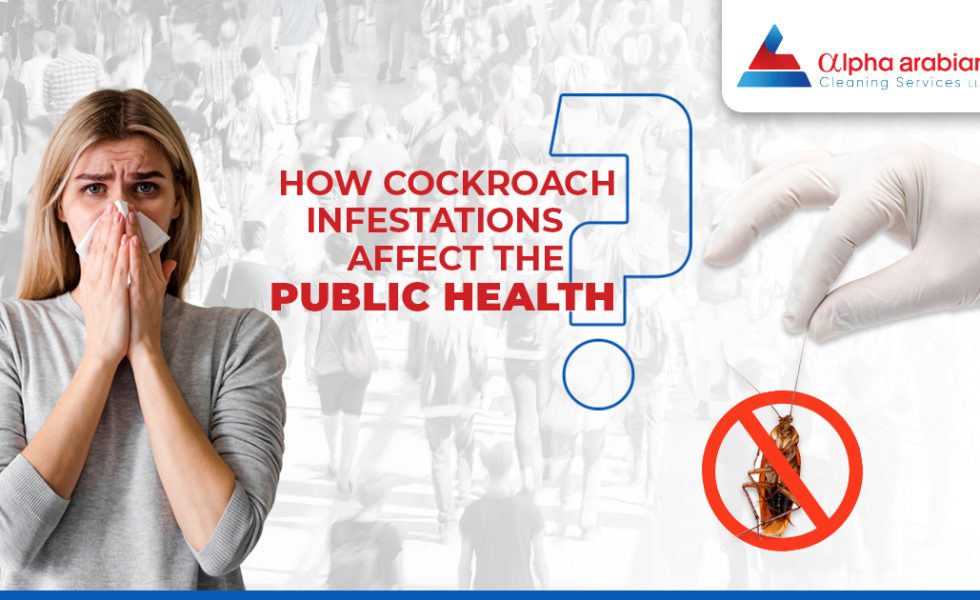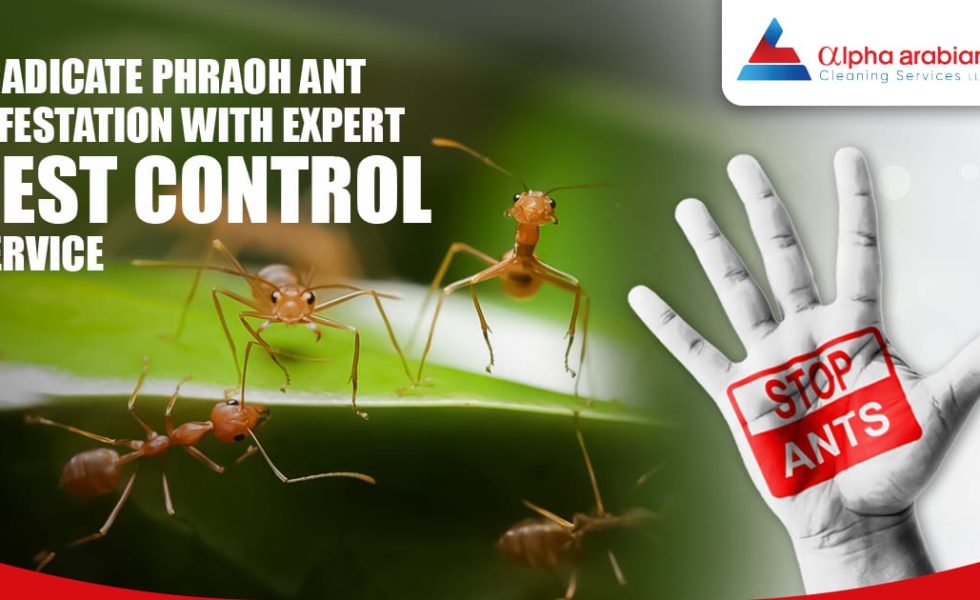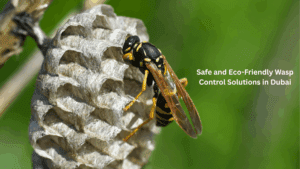How to use and monitor cockroach traps in roach pest control service
Cockroaches like darkness and moisture and they hide behind appliances, near sinks, or drains. They can get into small spaces because they can make themselves thin. If you see one during the day, you might find more. Cockroach infestations can be a serious nuisance and health hazard in both residential and commercial spaces. To combat these persistent pests, roach pest control services employ various pest control methods, one of which is the strategic use of cockroach traps. Learn what to do when cockroaches take over your premises. Follow these essential tips for using and monitoring them effectively in roach pest control service.
Types of cockroach traps
Cockroach traps come in two main types: disposable cardboard sticky traps and reusable plastic traps that capture cockroaches alive. Both types utilize chemical lures to attract cockroaches into it. Over recent years, sticky traps have gained popularity among pest control operators (PCOs) and hygiene inspectors due to their effectiveness.
Cockroach Population Studies
Researchers often use traps to gain insights into the size and composition of cockroach infestations in buildings and laboratory structures. Successful data collection from trapping records requires a strong understanding of cockroach biology and statistical pest control methods, especially sampling theory. When conducting population studies, it’s crucial to place cockroach traps strategically in areas where cockroach activity is likely, such as harborages or feeding areas. Researchers may need to use many traps to obtain accurate data.
Control Monitoring
In practical scenarios, pest control methods, hygiene officers, and researchers primarily aim to assess cockroach activity quantitatively over time, especially in areas where optimal conditions exist for these insects or where hygiene concerns are most significant.Placing traps strategically, such as under the cooker, refrigerator, and near refuse bins in a domestic kitchen, can provide valuable insights into the effectiveness of control measures in specific instances.
Key Considerations for Trap Usage
- An empty trap does not necessarily indicate the absence of cockroaches.
- Not all cockroaches are equally likely to enter a particular type of trap.
- Different traps may be more effective under specific environmental conditions.
- Overly full traps may no longer accurately represent cockroach abundance in an area.
- Male German cockroaches tend to roam more widely than females, which often prefer harborages.
- Other pests like rodents, reptiles, and invertebrates may consume or remove trapped cockroaches in some areas.
- Human occupants may inadvertently disturb traps.
- Contaminated with certain chemicals may become unattractive to cockroaches.
- Maintain meticulous records of trap locations, set-up, and checking times.
- Traps should complement other control measures and not serve as the sole solution.
To conclude
In the battle against cockroach infestations, cockroach traps are valuable tools when used correctly and strategically. Roach pest control service must consider various factors when employing these to ensure effective monitoring and control.
For a better understanding of the nuances of trap usage, roach pest control service professionals can better combat cockroach infestations and create healthier living environments for their clients. If you’re dealing with a roach problem, don’t hesitate to reach out to a professional roach pest control service in dubai that employs these effective pest control methods.
How to manage Non-Biting Midges with effective Flies Control Techniques
Non-biting midges, scientifically known as Chironomids, often mistaken for mosquitoes, can be a significant source of annoyance in Dubai. They frequently appear in great swarms around lakes, ponds, homes, and lights, disrupting daily life. Unlike mosquitoes, these tiny two-winged flies do not possess the ability to bite, making them essentially harmless to humans. In this blog post, we will explore effective Flies control techniques in Dubai, including misting treatment, spray treatment, and mosquito control treatment to help you manage non-biting midges.
Chironomids breed in water, both fresh and polluted. They primarily feed on the bottom debris of lakes, ponds, and effluent tanks of sewage treatment plants. Certain organisms multiply quickly in dirt and organic water with a high organic content. In such conditions, the bottom of water bodies can contain hundreds of thousands of larvae per square meter. The larvae are often green or red due to the presence of hemoglobin in their bodies, earning them the name “blood worms.”
Effects and Nuisances Caused by Non-Biting Midges
While non-biting midges are not a significant medical concern, their presence can lead to various nuisances. When these insects die in large numbers, dust and fragments of their dry bodies can trigger allergic responses in susceptible individuals, particularly in places like sewage works. Their excreta can ruin clothes left out to dry and deface buildings with the black spots they leave on painted walls, doors, and windows. Their swarming behaviour at dusk around bright lights can disrupt waterside recreational activities.
Effective Flies Control Techniques in Dubai
To manage non-biting midges effectively, consider the following Flies control techniques:
- Introduce Fish: Consider introducing fish to lakes and ponds as natural predators to control midge larvae. Fish, such as koi or goldfish, can help keep the midge population in check.
- Misting Treatment: Misting treatment is an eco-friendly approach that involves a misting system to disperse insecticides in affected areas. This method is highly effective in controlling non-biting midges without causing harm to the environment.
- : For localized infestations, spray treatment can be applied directly to the affected areas, such as around lights and breeding sites, to control midges.
- Mosquito Control Treatment: Non-biting midges often share habitats with mosquitoes. Opting for mosquito control treatment in Dubai can help address both issues simultaneously, ensuring comprehensive pest management.
Alpha Arabian Pest Control Service in Dubai
In Dubai, Alpha Arabian Pest Control Service is your trusted partner for managing non-biting midges and other pests. We provide thorough and effective pest control services for your home or business, ensuring a pest-free environment.
By partnering with Alpha Arabian Pest Control Service, you can address pest concerns efficiently and enjoy a pest-free environment in this vibrant city. Don’t let non-biting midges disrupt your daily life – take effective Flies Control Techniques and require a strategic approach that includes misting treatment, spray treatment, and mosquito control treatment to maintain a comfortable living space in Dubai.
Effective pest control tips against the Surinam Cockroach Invasion.
If you’re dealing with a Surinam cockroach invasion, you’re not alone. These dark brown to black cockroaches are measuring 18-24mm long and can quickly become a nuisance. In this blog, we will provide you the effective pest control tips to tackle Surinam cockroach infestations and keep your home pest-free.
Understanding Habitat and Behavior of Surinam Cockroaches
Surinam cockroaches, scientifically known as Pycnoscelus surinamensis, are originally from tropical Asia. They have fully developed wings, but these wings usually don’t cover the tip of their abdomen. Their forewings are light-colored. Surinam cockroaches prefer warm, moist environments, making loose leaf litter and crevices under stones their natural habitat.
While Surinam cockroaches are not classified as public health pests, their populations can grow to nuisance levels. Their primary impact is on horticultural and agricultural plants. These cockroaches can damage these plants, resulting in economic losses for farmers and gardeners. In temperate regions, they are known to thrive in heated greenhouses, posing a significant threat to crops.
Pest Control Tips for Surinam Cockroach Invasion
To effectively combat a Surinam cockroach invasion, follow these strategic pest control tips:
- Maintain a clean and clutter-free environment, reducing hiding spots for cockroaches. Regularly clean up food crumbs, spills, and debris. Fix any leaks or moisture issues, as cockroaches are attracted to water sources.
- Inspect your home for cracks, gaps, and crevices that cockroaches could use to enter. Seal these entry points with caulk or weather stripping to prevent access.
- Apply cockroach baits specifically designed for Surinam cockroaches in areas where you’ve spotted them. Follow the manufacturer’s instructions for bait placement and usage.
- Consider using insecticides labeled for cockroach control. Apply these products in hiding spots and along cockroach pathways. Ensure proper ventilation and safety precautions when using insecticides.
- For severe Surinam Cockroach Invasion, it’s advisable to seek the expertise of a professional pest control service. In Dubai, Professional pest control services like Alpha Arabian Pest Control services have access to effective treatments and can ensure thorough eradication.
- Keep an eye out for any signs of cockroach activity, such as droppings or shed skins. Use sticky traps or monitors to monitor their presence.
Safeguarding your property and enjoy a pest-free living environment
By understanding the habits and behavior of Surinam cockroaches and taking proactive steps, you can effectively protect your home from these resilient pests. Enjoy the peace of mind that comes with a pest-free living environment while contributing to the valuable field of scientific study, particularly in educational settings. Defend your property against Surinam cockroach invasions with these comprehensive pest control tips from professional pest control services like Alpha Arabian Pest Control in Dubai.
Effective spider control tips for brown windows spiders
When people talk about dangerous spiders, they often think of the black widow with its shiny black body and red hourglass mark underneath. The brown widow spider, scientifically known as Latrodectus geometricus, is closely related to black widow spider , but it’s a species that deserves attention when it comes to pest control service. With its neurotoxic venom and presence in various habitats, including residential areas, understanding how to manage and control these spiders is crucial. If you come across a spider and are certain it’s a brown widow, consider the question. “Can we just live and let live?”
Brown Widow Spider: It is a member of the Latrodectus genus and is commonly referred to as the brown widow, grey widow, brown button spider, or geometric button spider. These arachnids are lighter in color than black window species, ranging from tan to dark brown to black, with shades of grey. One of their distinctive features is the prominent “hourglass” marking on the underside of their abdomen, often in a yellowish color. The dorsal side of their abdomen features a black-and-white geometric pattern, and their legs may have dark bands.
Identification Tip: Locating brown widow spiders can be facilitated by finding their unique egg sacs, which resemble sand spurs, with pointed projections all over. Unlike black widow egg sacs, brown widows have lumpy, white to tan colored egg sacs that are about half an inch in diameter. Eggs typically hatch in approximately 20 days.
Venom and Risk: Brown widow spiders possess neurotoxic venom, which some arachnologists claim is twice as potent as black widow venom. However, the brown widow is often considered less dangerous due to its lower likelihood of biting humans and its venom being mostly confined to the bite area and surrounding tissue. Nevertheless, it’s essential to exercise caution, especially when a female is guarding her egg sac.
Life Cycle: Brown widow females can live up to three years, while males have a significantly shorter lifespan of six months to one year. Spiderlings primarily feed on flightless fruit flies, pinhead crickets, and other large insects.
Habitat: Brown widow spiders are commonly found in tropical regions, primarily in undisturbed areas like brush piles, wood piles, and debris accumulation sites. They can also inhabit crawl spaces, areas under chairs, garbage can handles, flower pots, eaves, and porch railings.
Effective Spider Control Tips
Now that we’ve discussed the basics of brown widow spiders, here are some effective spider control methods to keep them at bay:
Remove Nesting Areas: The best way for spider control is by eliminating their potential nesting spots. Regularly clean up every corner of your home, including brush piles, wood piles, and areas where debris accumulates.
Seal Cracks and Crevices: Prevent spiders from entering your home by sealing cracks and crevices around doors, windows, driveways, and sidewalks.
Use Spider-Specific Insecticides: Opt for spray or powdered insecticides labeled for spiders. Apply these products in areas where spiders are likely to dwell, but ensure you follow safety precautions.
Professional Pest Control Service: When dealing with a significant infestation or if you’re unsure about handling spider control on your own, consider hiring a professional pest control service in Dubai. They have the expertise and equipment to effectively manage spider populations.
While the brown widow spider may not be as notorious as compared to other widow spiders, it’s essential to treat it with caution and get a solution from pest control service in dubai.
Despite being invasive, it plays a significant role in the ecosystem. Their intriguing nature and potential lower risk to humans should not diminish the importance of handling them with caution and respect. By following the tips mentioned above, you can reduce the likelihood of encountering these spiders in your home and ensure a safer living environment for you and your family.
Flies control strategies for the eradication of Indoor Pest Flies.
Indoor pest flies can be a persistent annoyance, infiltrating homes and establishments, but understanding their behavior and implementing smart fly control strategies can make a significant difference. There are several types of indoor pest flies that are annoying to humans like owl Midges , or Drain Flies, Phorid Flies, and Fruit Flies. Note down the characteristics and practical ways to manage their populations.
Owl Midge or Drain Fly: Owl Midges, with their moth-like appearance, measure a mere 2-4mm. Their nocturnal habits draw them to indoor lights, leading them to establish egg-laying sites in kitchens and bathrooms. The breeding ground for their larvae is often the gelatinous deposits along drains, and their sudden appearance might indicate plumbing issues. While they can carry pathogens, they’re not drawn to food. Fortunately, pesticides are rarely needed; disconnecting drains and eliminating breeding sites suffices.
Phorid Fly or Scuttle Fly: Phorid Flies, at 3mm, are known for their jerky movements. Breeding in moist decaying organic matter, they can infest a range of spaces from medical facilities to kitchens. The filth they’re associated with makes them potential carriers of pathogens into food. Residual insecticides are rarely required; the key is locating and eradicating breeding sites, even in unexpected areas like laboratory cultures.
Fruit Fly: Fruit Flies, recognizable by their red eyes, measure 3mm and breed in fermenting materials. Their presence in domestic spaces can signal unattended residues in milk bottles or overripe fruits. These flies, too, can be problematic in industrial settings such as canning factories. Since they breed in unsanitary areas, they pose a risk of carrying pathogens onto food. Eradicating breeding sites and efficient fly control strategies is pivotal, with insect light traps aiding in capturing adult flies.
Effective fly control strategies:
Sanitation: Maintaining a clean environment by regularly cleaning drains, eliminating decaying matter, and promptly discarding overripe fruits.
Breeding Site Elimination: Regularly inspect and clean drains, sink edges, garbage bins, and other potential breeding spots.
Hygiene Practices: Maintain good hygiene in kitchens, bathrooms, and other susceptible areas to discourage fly infestations.
Structural Repairs: Address leaks, plumbing issues, and cracks that might contribute to moisture-rich breeding sites.
Insect Light Traps: Use traps strategically to attract and capture adult flies, aiding in population control.
Professional Pest Management services: In severe infestations, consider seeking the assistance of pest management services in dubai for effective and targeted control.
When to call a professional pest management services?
If you are exhausted with indoor pest flies, effective pest management services in dubai involve a multi-pronged approach that focuses on. Understanding the behaviors and characteristics of the indoor pest flies enables homeowners and businesses to implement smart fly control strategies, reducing the nuisance and potential risks associated with these tiny yet bothersome pests.
Understanding Bed Bug Life Cycle and Prevention of BedBug Infestation
Bedbug infestations can quickly turn into nightmares, but with a comprehensive understanding of the bedbug life cycle and the prevention of BedBug Infestation strategies, you can effectively keep these pesky pests at bay. Let’s acquire knowledge of the various stages of the bedbug life cycle and discover effective measures for the prevention of Bedbug infestation.
- The Beginning: Bed Bug Eggs
The journey starts with tiny, pearly-white eggs measuring about 1mm in length. These eggs are in the hideouts of adult bed bugs – cracks and crevices in infested areas. With a lifespan of 3 months, these eggs transform from their initial white color to a translucent hue as the nymphs inside prepare to emerge.
- Incubation Period
The time it takes for these eggs to hatch varies with temperature. At different temperatures, the incubation period changes:
INCUBATION PERIOD (DAYS)
28 ͦC 5.5
25ͦC 7.1
23ͦC 9.2
18ͦC 20.2
15ͦC 34.0
13ͦC 48.7 (Life Cycle Not Completed)
7ͦC No Hatch
- Nymphal Stages
The nymphal stage follows, with five distinct stages of development. Between each moult, the nymphs require a blood meal. An extended nymphal period may result if a blood meal isn’t available.
- Life Cycle Egg to Adult
The duration from egg to adult bed bug varies with temperature:
28°C: 34 days
25°C: 46 days
23°C: 61 days
18°C: 125 days
15°C: 236 days
13°C: Not Completed
Bed bug development occurs between 13°C and 37°C.
- The Mature Stage: Adult Bed Bugs
Fully-grown adult bed bugs are 4-6mm in length and reddish-brown. Distinguished by their darker shade and small wing pads, these adults can live different durations depending on temperature. At 18-20°C, they survive for around nine months to a year, whereas at 27°C, the period is 15 weeks, reducing to 10 weeks at 34°C. Their adaptability and resilience are well-suited to a parasitic lifestyle.
- Surviving Starvation
Bed bugs can endure periods of starvation, adapting to their environment. The duration they can survive without food is temperature-dependent:
Starvation (Days)
23 ͦC 85(136) 69(127)
18 ͦC 152(260) 143(225)
15 ͦC – –
13 ͦC 338(470) 360(565)
7 ͦC 200(386) 286(465)
Understanding and Prevention of Infestation
Understanding the bedbug life cycle, from their tiny eggs to the resilient adults, can empower homeowners in their battle against infestations. Effective pest control strategies depend on monitoring temperature conditions and understanding their stages. If you suspect a bed bug problem, considering professional pest control services like Alpha Arabian Services might be your best solution. Prevention of bedbug infestation and eradication are your best allies in the fight against bedbug infestations.
Effective Analysis about Surplus Baiting and Pulsed Baiting for Rodent Control Service.
Numerous individuals worldwide are struggling with mouse infestations on their premises, posing threats to property and human well-being alike. These pests can cause damage to furniture, books, clothes, electric wires, plastic pipes, food supplies, valuable documents, and more. Once they infiltrate your home, they bring forth a host of destructive consequences. Beyond material damages, these intruders also pose significant health risks. While their presence is undoubtedly hazardous, there’s no need for alarm – a composed rodent control service is the ultimate key factor. Effective rodenticide is essential for a clean and safe environment, especially in areas prone to infestations. Two distinct approaches for rodenticide have emerged: Surplus Baiting and Pulsed Baiting.
Surplus Baiting:
This involves the use of first-generation anticoagulants that require rodents to ingest multiple doses over several days to receive a lethal dose of rodenticide. However, an interruption in the supply of bait or access to it can lead to rodents failing to ingest a sufficient dose, rendering the treatment ineffective.
One critical consideration in surplus baiting is the hierarchical nature of rodent populations. Dominant rodents tend to monopolize food sources, leaving subordinate rodents with limited access. To ensure the efficacy of this method, it’s important to ensure that there’s enough bait remaining for the subordinate rodents after the dominant ones have consumed their share. Additionally, due to the delayed onset of symptoms from the poison, dominant rodents might continue to consume bait even after ingesting a lethal dose.
To maintain a surplus of bait in each bait station, rodent control service operators need to replenish the bait every 1-2 days. This consistent baiting regimen continues until rodent activity decreases and fresh signs of rodent presence cease.
Pulsed Baiting:
Pulsed baiting, on the other hand, relies on second-generation anticoagulants that allow rodents to ingest a lethal dose in a single feeding. This eliminates the need for rodent control service operators to visit bait stations for every 1-2 days, as a single feeding is sufficient for a lethal outcome.
In pulsed baiting, smaller quantities of bait (typically 30-45g for rats and 15g for mice) are initially laid out. After 7 days, the bait points are replenished, by which time the dominant rodents would likely have succumbed. The baiting schedule then proceeds every 7 days until rodent activity diminishes entirely.
Comparing the Strategies:
Both these baiting have their advantages. Surplus baiting ensures that a continuous supply of bait is available to subordinate rodents even after dominant ones have fed, enhancing the overall effectiveness of the treatment. However, it demands more frequent manpower and bait inputs. Even though, when dominant rodents ingest a fatal dose, they continue to feed and finally jumping to the poison.
Pulsed baiting, on the other hand, reduces the need for frequent bait replenishment and manpower involvement. The operators of the rodent control service in dubai can make effective approaches in terms of resource utilization, but it’s essential to follow a consistent baiting schedule to ensure that rodent activity is fully controlled.
Summing up
In terms of rodent control, both the baiting has its merits. The choice between these strategies depends on factors such as rodent population dynamics, available resources, and the expertise of the rodent control service in dubai. While surplus baiting emphasizes maintaining a consistent surplus of bait to cater to subordinate rodents, pulsed baiting capitalizes on second-generation anticoagulants to reduce the frequency of bait replenishment. By understanding the nuances of these strategies, rodent control professionals can make informed decisions to effectively manage rodent infestations with the help of rodenticide and create healthier living and working environments.
How Cockroach Infestations Affect the Public Health from Pest Control Experts
Cockroach infestations in Dubai have become a significant concern in recent years, not only due to their repulsive appearance, but also because of their potential impact on public health. This comprehensive blog post finds the lesser-discussed aspects of cockroach infestations that extend beyond infectious risks. From allergies to psychological effects, we explore the wide-ranging consequences of these unwanted pests and the need of cockroach control services in Dubai.
Cockroach Allergies
Recent research has unveiled a troubling phenomenon – human sensitivity to proteins derived from cockroaches. The prevalence of this sensitivity is alarmingly high, especially among asthmatic children living in homes infested with German cockroaches. An estimated 79% of people are sensitive to cockroach infestations, adding to the evidence that these pests can pose non-infectious risks.
Laboratory workers who handle captive cockroach colonies are also at risk for dermatitis and conjunctival edema. Workers have experienced anaphylactic shock in these environments, demonstrating the importance of robust pest control measures.
Cockroach Allergens and Air Quality
The impact of cockroach allergens extends beyond infested homes. It is possible to detect these allergens in the air around cockroach colonies, posing a threat to a wider population. Even homes without visible signs of infestation may contain measurable amounts of cockroach allergens, underscoring the urgency of effective pest control. Alpha Arabian offers specialized cockroach control services to address cockroach allergens.
Asthma and Cockroach Allergens: An Alarming Correlation
Studies suggest a correlation between sensitization to cockroach allergens and the rise in asthma mortality and morbidity, particularly within specific populations. These findings highlight the pressing need to address cockroach infestations comprehensively.
Pest Control Experts to the Rescue
Pest Control Experts are essential in Dubai, where a rapidly growing urban landscape is susceptible to infestations. Alpha Arabian provides specialized roach pest control services to combat cockroach infestations effectively. With expertise tailored to the unique challenges of the region, Alpha Arabian roach pest control services play a vital role in maintaining public health.
Psychological and Sociological Impacts
Beyond physical health, cockroach infestations carry psychological and sociological implications. In chronically infected, poor-quality housing, tenants often experience reduced self-esteem and even shame. The association between cockroaches and poor hygiene amplifies these negative perceptions. Our cockroach control services extend not only to eradicating pests but also to fostering healthier, harmonious living conditions that bolster community bonds.
Balancing Pest Control and Wellbeing
While rigorous pest control measures are essential, an obsessive approach to eliminating arthropods can lead to an unnecessary fixation. Striking a balance between maintaining hygiene and seeking pest control services is key to ensuring a healthy living environment. Our top-tier cockroach control services in Dubai acknowledge the significance of this balance, offering you a comprehensive solution that not only eradicates pesky intruders but also nurtures a wholesome living space.
Roach Pest Control Experts in Dubai
cockroach infestations are a multifaceted challenge that extends beyond infectious factors. The heightened awareness of sensitization, the potential correlation with asthma, and the psychological effects emphasize the need for effective pest control experts.
By embracing the expertise of Alpha Arabian roach Pest Control in Dubai, you can safeguard your home and contribute to a healthier community. Understanding the profound impact of cockroach infestations on public health empowers you to make informed decisions and take proactive steps toward a safer living environment. If you need further guidance on tackling cockroach infestations or ensuring your living spaces are pest-free, reach out to Alpha Arabian Cockroach Control Services today.
Eradicate pharaoh ant infestation with expert pest control service
When it comes to household pests, the tiny but relentless pharaoh ant has gained quite a reputation. Measuring a mere 1.5 to 2mm in length, this pint-sized pest bears a significant potential for disruption, particularly in environments where food and medical supplies are at stake. They exhibit the potential to propagate infections, particularly concerning their presence in hospital settings. Research has demonstrated that these ants can act as vectors for over 12 infectious microorganisms.
Furthermore, this pest can escalate into a significant concern within apartments, schools, office buildings, and other environments where food is manipulated. While they do partake in sweet substances, and display a distinct preference for indulging in greasy and fatty meats.
Let’s see the peculiarities, habits, lifecycle, and the crucial role of effective pest control service in curtailing its rampant infestations.
It may seem innocuous at first glance with their golden yellow to brown bodies adorned with distinctive black markings on their abdomens. However, beneath their diminutive exteriors lie complex behaviors and tendencies that have garnered them a reputation as formidable adversaries in the pest world.
Habitat and Nesting Preferences:
The ant exhibits a proclivity for nesting in hard-to-reach and warm, humid locations within buildings. Cracks, crevices, and concealed corners become their sanctuaries, making them a challenge to eradicate. They gravitate towards environments that offer high temperatures and humidity, with an uncanny affinity for water sources. From wall sockets to kitchens and bathrooms, they assert their presence wherever these conditions prevail.
Public Health Concerns:
The dietary preferences underscore its adaptability and persistence. These tiny terrors display an affinity for sweet and fatty foods, making kitchens, bakeries, and restaurants particularly susceptible to pharaoh ant infestations. Their appetites extend to dead insects, meat, and grease, broadening their impact on domestic and commercial settings. Yet, the stakes heightened when the ants infiltrated hospitals and food preparation establishments. Their ability to breach packaging and contaminate sterile supplies raises serious public health concerns, warranting urgent intervention.
Lifecycle and Reproduction:
The life cycle unfolds relatively short, underscoring its capacity for rapid proliferation. Under optimal conditions of 27°C temperature and 80% relative humidity, the process takes shape:
- Eggs hatch within 7.5 days.
- The larval stage persists for 18.5 days.
- The pre-pupal stage spans 3 days.
- The pupal stage endures for 9 days. The entire metamorphosis from egg to adult worker culminates in approximately 38 days, a testament to the ant’s tenacity.
Control Strategies:
From households to commercial ventures confronting a Pharaoh ant infestations necessitates a multi-faceted approach, tailored to the specific context of the invasion. While homeowners can adopt pest control service such as denying ants access to food sources and judiciously using retail aerosol insecticides, larger-scale pharaoh ant infestations demand the expertise of licensed pest control service operators. The deployment of specialized baits emerges as a potent weapon in the battle against these miniature invaders, particularly in spaces like hospitals, food factories, and other high-risk establishments.
Summing Up
The ant may be diminutive, but its potential for disruption is immense, particularly in settings where food safety and public health are paramount. Understanding its habits, lifecycle, and the urgency of effective pest control service is crucial to prevent pharaoh ant infestations and also safeguarding our homes, businesses, and medical facilities from this formidable foe. By uniting knowledge and action, we can fortify our defenses and ensure that their reign of them remains confined to the annals of history.
Optimal pest control service through our innovative pest management system
In the realm of property maintenance and public health, effective pest management stands as an essential pillar. Alpha Arabian has revolutionized the pest control industry with its innovative and scientific approach known as the total pest management system. By integrating this system, Alpha Arabian pest control service ensures unparalleled protection against a variety of pests, ranging from the common housefly to the elusive Redback spider. Let’s delve into the core aspects of this cutting-edge pest management concept, exploring its seven-step process and the diverse types of pests it addresses.
The seven-step of the Total Pest Management System :
Alpha Arabian’s total pest management system is not just a conventional pest control service; it’s a meticulously designed process that combines expertise with science. Here’s an overview of the seven steps that make up this groundbreaking system:
Inspection:
The foundation of an effective pest management system lies in understanding the pest’s environment. The pest control technicians conduct a thorough inspection of every facility, focusing on critical pest activity zones, such as entry points, water sources, food sources, harborage and breeding points, as well as customer and employee areas.
Facility Layout Analysis:
By analyzing the layout and traffic patterns of a facility, potential problem areas are identified. This step ensures that the treatment strategy is tailored to the facility’s unique characteristics, including the flow of people in and out of the building.
Pest Identification:
Different pests demand distinct treatment approaches due to variations in their life cycles, habitats, and behaviors. Collaboration between operators, customers, and facility employees helps gather accurate data on pest sightings, aiding in prevention and control.
Customized Program:
Cookie-cutter solutions have no place in the total pest management system. Location, climate, building conditions, and age are key factors that guide the creation of a customized pest control program. A comprehensive analysis, including input from key employees, ensures a targeted and effective strategy.
Sanitation Consultation:
A crucial aspect of TPM is maintaining a rigorous daily sanitation schedule. This proactive measure has been taken by the pest control service against the pest which directly impacts factors contributing to pest buildup, both inside and outside the facility.
Treatment Strategies:
Prioritizing non-chemical control methods showcases Alpha Arabian’s commitment to environmentally friendly practices. Chemical options are considered only after exhausting alternative solutions.
Ongoing Monitoring & Maintenance:
Continual vigilance is paramount. Accurate reporting of pest sightings and meticulous documentation for clients and regulatory agencies ensure the sustained success of the TPM program.
Types of Pests Addressed by TPM:
There are various types of pests addressed by Alpha Arabian’s pest control service. Their comprehensive approach effectively tackles an array of pests that threaten both public health and property integrity. Let’s take a closer look at some of the types of pests that the pest management concept addresses:
Flies: The common housefly, often underestimated, is a potent carrier of diseases. Alpha Arabian aims to control fly populations by targeting breeding and harborage sites.
Ants: Social insects like ants can infiltrate buildings, causing contamination issues. The pest management concept targeted an approach to prevent and manages ant infestations while considering their nesting patterns.
Wasps: While not carriers of infectious diseases, wasps can contaminate food and pose risks to individuals with allergies. The TPM strategies ensure their effective management.
Fleas: Parasitic fleas, commonly associated with pets, can infest human living spaces. TPM’s pest control measures extend to eradicating these blood-feeding pests.
Cockroaches: Recognized as significant public health pests, cockroaches can spread diseases. TPM’s tailored solutions to combat cockroach infestations, considering the specific species prevalent in Dubai.
Fabric and Food-Damaging Insects: TPM addresses a range of fabric-damaging insects like beetles, weevils, and moths, which also pose food contamination risks. Its multifaceted approach ensures comprehensive protection.
Bedbugs: Alpha Arabian’s pest management concept employs strategies to combat bedbugs, nocturnal parasites that feed on human blood, emphasizing the importance of proactive management.
Redback Spiders: The presence of venomous redback spiders in Dubai demands immediate attention. TPM includes specialized measures to mitigate the risks posed by these arachnids.
Conclusion:
Alpha Arabian’s TPM transcends conventional pest control, offering a scientific, holistic, and proactive approach to pest management. Through its seven-step process, Alpha Arabian ensures that every client benefits from a customized and effective pest control strategy. By addressing the various types of pests, from disease-carrying flies to venomous spiders, TPM stands as a true guardian, safeguarding premises and public health. Choose TPM and experience a new paradigm in pest management that offers both peace of mind and lasting protection.


